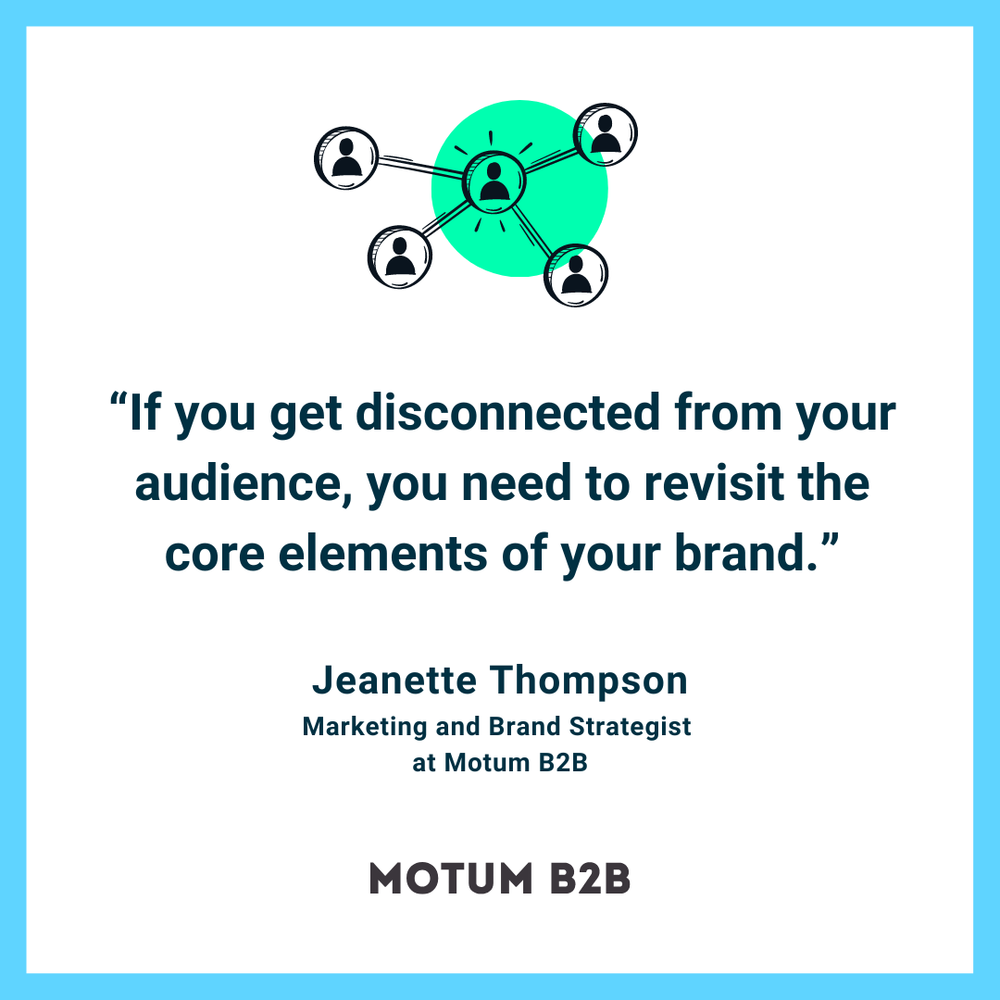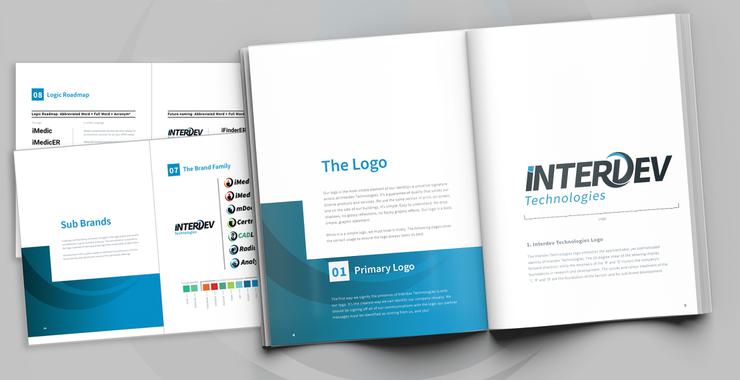What makes your B2B brand unique?
Every brand has a story to tell, but sometimes that story gets lost in the noise of B2B marketing. Find out how to tell a brand story that resonates with your audience.

In B2B, it’s always tempting to play it safe. When it comes to differentiating your brand, sending a generic message is like sending no message at all. Why should a customer pick yours from a crowd of identical voices?
To pinpoint what makes your brand unique, honesty goes a long way. That means being clear about why you want to reevaluate your brand, hearing what your customers have to say, and using specific language to define what you have to offer.
Then you’ll be ready to make some noise.
Start with “Why?”
“One of the things brands don’t consider early enough is why they’re looking for a rebrand or brand refresh,” says Jeanette Thompson, our Marketing and Brand Strategist.
Common reasons for rebranding include mergers and acquisitions, where both businesses evaluate how their brands should come together for a consistent fit. In another scenario, the business evolves over time without a strong framework in place, which leads to fractured or incoherent positioning. In practice, this could look like clashing colour palettes, inconsistent messaging, or a series of sub-brand logos that don’t work well together because they were developed independently of one another.
In these types of examples, the reason to refresh could be to unify the brand structure with consistent, harmonious visuals that send a clear message to viewers.
“When the brand structure isn’t unified, it can cause confusion among the target audience,” says Thompson. “If you get disconnected from your audience, you need to revisit the core elements of your brand.”
That’s where audits come in.
Audits: Where you are and where you’re going
To evaluate the “why” behind a brand refresh, businesses can try exercises like collateral audits, website audits, or more general brand audits to evaluate the current state of their brand and determine its future objectives. Put simply, it’s about asking, "Where is the brand currently, and where do we want it to go?"
“Audits ensure consistency and alignment with your core values,” says Thompson. “Include all your key stakeholders in those audits to make sure you’re consulting people who work with the brand at various levels and see how it’s changing.”
For deeper insight, you can gather customer feedback to understand the perception of your brand from the outside. If the perception doesn’t align with your objectives, you can address it in the refresh.
“Only customers can tell you what they find most valuable about your brand, because they’re the ones interacting with it,” says Thompson. “You can really hone in on that knowledge of your current customer base.”
An audit can also add insight into what your competitors are doing, branding-wise — not to emulate them, but to ensure you’re able to stand out in that space.

What does your brand stand for?
According to Thompson, the audit process is not to be rushed.
“Mistakes during this process can lead to designing a brand that gets caught up in trends rather than something that resonates with your target audience. When this happens, the brand lacks a backbone. It’s founded on something that doesn’t have meaning or longevity, and isn’t connected to your mission, vision, or brand values.”
To avoid that fate, you’ll need to do some hard work to define your brand, its core competencies, and its values. One of the most important questions you can answer is: What does your brand stand for?
If your first thought was “quality”, let’s try to dig a little deeper. For example, maybe you care so much about manufacturing quality products because the competition makes money on products that break more easily and, therefore, need to be replaced often. This is harmful to customers, and you feel your brand offers them something beyond the product, like trust and peace of mind. Maybe you even feel it’s a matter of honour.
Notice how, by exploring your brand’s values further, more emotional language enters the scene. This language is essential to crafting a brand story your audience cares about. It’s so much more specific than “quality,” and it conveys so much more.
“You have to choose strategically what you want the brand to stand for,” says Thompson. “If you stand for everything, you stand for nothing.”
Understanding pain points
If you’re having trouble nailing down what your brand stands for, or telling a brand story in general, bring it back to the customer. What are their common pain points, how does the business solve those pain points, and how does it do it better than the competition?
“To stand out, you need a deep understanding of your target audience,” says Thompson. “You should take their needs into account, anticipate problems in advance, and adapt so you can always help customers achieve their desired results.”
How does this translate to your brand identity? Aside from telling stories that resonate with the audience, user experience (UX) and customer experience (CX) also come into play.
“The interaction with the customer is really important,” Thompson explains. “If your website is hard to navigate, they can’t find the information they need, or they can’t get in touch, people aren’t going to do it. Make sure your customer has the best experience at every touchpoint.”
Again, the best way to provide that experience is to talk to your customers. It could be a survey, an interview-style video call, or a quick email to ask them how they feel about working with your brand and using the website.
Doing the brand justice: Consistency and implementation
Once you’ve identified brand values, brand story, and ways to improve the customer experience, you’ll be well-armed to go through the process of a rebrand or refresh. By the end, you should have a set of guidelines on how to implement your new branded assets.
There’s still work to be done at this stage. Thompson warns that to do your new brand justice, you shouldn’t attempt to implement it half-heartedly. If your team lacks the skillset to put that brand identity into action, you can still run into problems where visuals and messaging lack consistency, clarity, and impact.
“A rebrand doesn’t end with the logo,” she explains, adding that new guidelines can encompass things like colour palettes, styles, tone and voice, and messaging. “Considering all the touchpoints that need to be shifted from the new identity, using professionals who can implement your brand will give you even more impactful results.”
Whenever you need to re-align, you and your team can come back to the results of your brand audit. “Don’t go on your gut feeling when you can go on insights,” says Thompson. “The strategic work will lay a strong foundation for your brand.”
If your brand’s unique voice ever feels lost, it can always be found in that foundation.
Want to find the story only your brand can tell?
Talk to our B2B content team. We'll help you cut through the noise.

